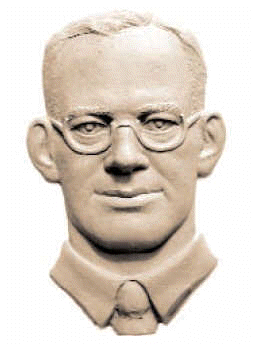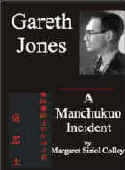Gareth Jones
[bas relief by Oleh Lesiuk]
HOME |
Stop Press |
Complete Soviet Articles & Background Information |
Précis of Gareth's
|
All Published Articles |
BOOKS
|
|
|
|
More Than Grain of Truth(2005) |
|
|
TOPICAL
'Are you Listening NYT?' U.N. Speech - Nov 2009 |
Gareth Recognised at Cambridge - Nov 2009 |
Reporter and the Genocide - Rome, March 2009 |
Order of Freedom Award -Nov 2008 |
Premiere of 'The Living' Documentary Kyiv - Nov 2008 |
Gareth Jones 'Famine' Diaries - Chicago 2008 |
Aberystwyth Memorial Plaque 2006 |
GENERAL
Scholarship Fund |
Site Map |
Links |
Legal Notices |
Sponsored Links |
Contact |
|
The rival faction was the Tosei-Ha or control school. General Hayashi, who had once been Commander-in-ChHTTP/1.1 100 Continue ief of the Kwantung Army, took over office as Minister of War from Araki and came under the influence of Major General Nagata. In 1935 he was active in opposing the Strike-North Faction and ridding those in the army that supported it. After much intrigue, he affected the resignation of Mazaki. In the spring and summer of that year there were plots and counter-plots to this end culminating in the assassination of Nagata on the same day that Gareth was killed. On August 12th 1935, [because of the virtual dismissal of Mazaki], an obscure lieutenant colonel cut Nagata down with a sword. Hayashi then had to resign to save the government. In August 1935 Matsuoka was appointed to the Presidency of the South Manchurian Railway. He identified the Railway Company as the economic spearhead of Japan’s expansion into China. This Japanese man predicted that: Because of the activities of the Soviet Union and the situations prevailing in China, Japan is going to start operations in North China. Most of the people of Japan do not yet quite understand the great importance of the future operations and their lack of understanding, I believe will beyond doubt bring about a really serious crisis in the nation. Regardless how serious the crisis may become, Japan cannot halt her Chinese operations. The arrow has already left the bow. The progress of these operations will decide the destiny of the Yamato race. The
history of the Far East following the First World War should not be seen in
isolation, but should be viewed from a global context. Japan had entered The Great War on the side
of the Allies in August 1914. She soon
captured the German fortress of Tsing-tao and became firmly established in
Shantung as well as Manchuria. The
ruthless German submarine campaign in the North Atlantic forced President
Woodrow Wilson to join the Allied cause in April 1917. Prior to the entry of the United States,
Britain and France had secretly negotiated with Japan that she should acquire
Germany’s Chinese Concession of Shantung. President Wilson was very much against this secret agreement, though he
had to concede to it despite American affiliation with China and growing
anti-Japanese sentiments. This acquisition
incited Chinese students to demonstrate against the Imperialists on May 5th
1919. |
Hirohito in Imperial Robes. |
|
|
|




